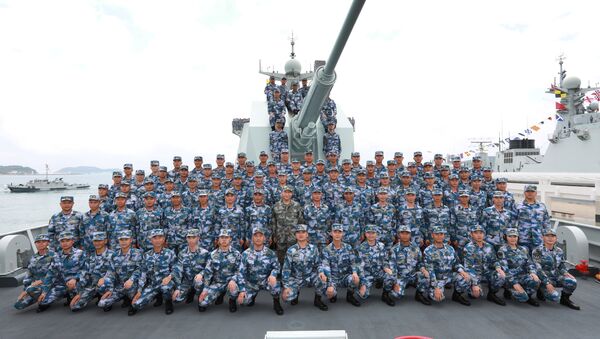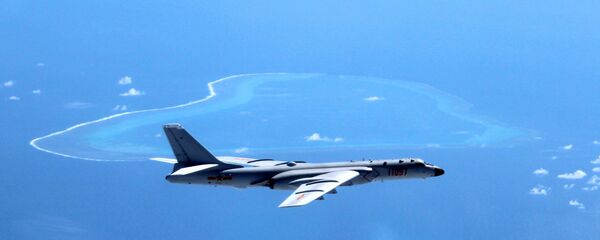Admiral Philip S. Davidson, chief of US Fleet Forces Command, wrote in a report to the US Congress that "once occupied, China will be able to extend its influence thousands of miles to the south and project power deep into Oceania."
"The PLA [Chinese People's Liberation Army] will be able to use these bases to challenge US presence in the region, and any forces deployed to the islands would easily overwhelm the military forces of any other South China Sea claimants. […] In short, China is now capable of controlling the South China Sea in all scenarios short of war with the United States," Davidson said.
READ MORE: Beijing Slams US Decision to Sail Warship Through Disputed South China Sea
The warning came after China's Defense Ministry stated last week that Australian media reports that Chinese naval vessels had recently challenged Australian warships in the South China Sea "did not accord with the facts."

According to the ministry, the Chinese warships used "professional language to communicate with the Australians, and their operations were lawful, compliant [with international norms], professional and safe."
READ MORE: US Navy: China Militarizing South China Sea With 7 New Bases
Confirming that its three warships recently traveled to Vietnam's Ho Chi Minh City via the South China Sea, the Australian Defense Department in turn refused to comment on "operational details" related to the matter.
In its policy paper on national interests and diplomacy, published in late 2017, Canberra specifically stressed that it was "particularly concerned by the unprecedented pace and scale of China's activities" in the South China Sea.
Beijing has been pushing its claim to the area by constructing artificial islands around the disputed Spratly Island chain.
The US has been fueling tension by conducting patrolling and performing drills with its allies in the region. Washington claims that its actions aim to maintain freedom of navigation, while Beijing criticizes the actions as a violation of its territorial sovereignty.



